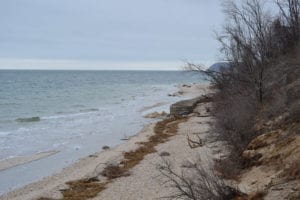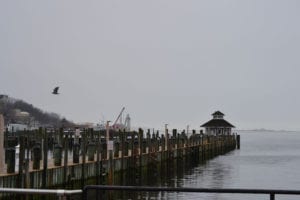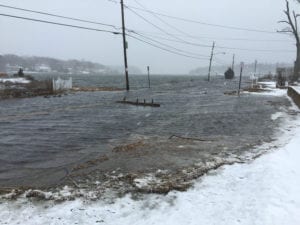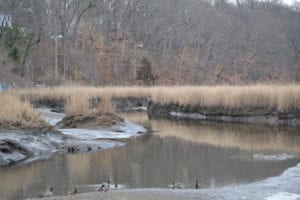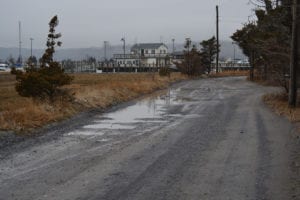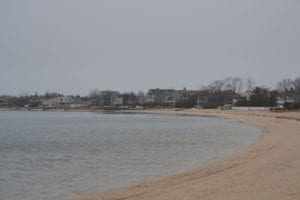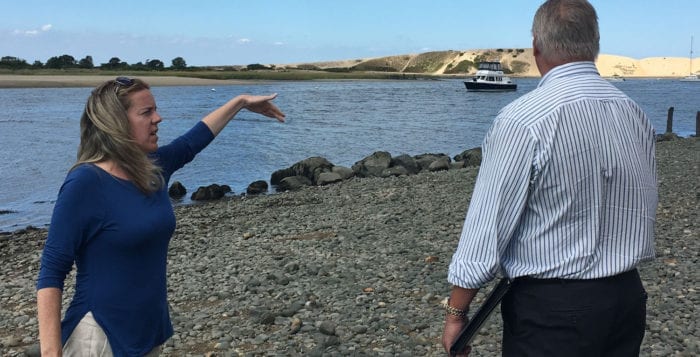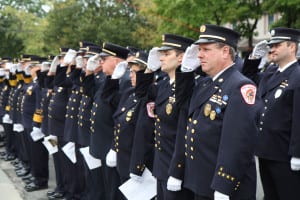Decades-old records show that North Shore children have fallen prey to sexual predators, whether it’s been while in the Boy Scouts or church groups or perhaps even in a family setting. But new laws, combined with education, are shifting the social paradigm, and the experts say that people need to take a more active position to prevent childhood sexual abuse.
Governor Andrew Cuomo (D) signed the Child Victims Act in January, which takes effect in June. The law essentially aims to institute more sensitivity toward victims, while holding perpetrators accountable. It raises the statute of limitations for victims from 18 to 23 years of age, so victims can file criminal charges in adulthood. For civil charges, victims have until the age of 55 to file charges against the offender.
Stephen Forrester and Annie Costello are with The New York Society for the Prevention of Cruelty to Children, an organization that is playing a leading role toward change. Forrester, a former prosecutor with 28 years of experience addressing child abuse, successfully lobbied for better laws for the last four years, while Costello has been part of a new evidence-based program, funded by the National Institutes of Health that trains and educates professionals as well as the general public on how to prevent child sexual abuse.
“It’s everyone’s responsibility — adults, organizations, parents, children,” said Costello. “Parents need to teach children how to keep their bodies safe.”
Assaults thrive in a culture of secrecy, she said, and when adults aren’t talking about it at home it’s harder to prevent. In order to stop child sexual abuse in the future that veil of secrecy needs to be removed.
This often requires that adults overcome their own anxieties about the topic.
Access and opportunity, two factors that underlie abuse scenarios
One in five people, by the time they’re 18 years old, become victims of childhood sexual assault, according to Costello and her organization. Rather than strangers, the society finds that 90 percent of the time the perpetrators are people a child knows and trusts.
“It can be difficult to believe that a beloved uncle, favorite coach, or respected clergy member could abuse a child,” Forrester said. “Perpetrators can be very charming, manipulative and believable.”
Offenses typically occur in scenarios where adults are entrusted with the care of children without the supervision of parents. Whether its music lessons, Scouting groups, sports clubs or schools or churches, parents need to ask up front to review the organizations policies and practices. Every organization, Costello said, should have information available on both its background screening process for its volunteers or workers and its policies for handling abuse.
“Offenders are very skilled at building relationships with kids.”
— Annie Costello
Otherwise, the society has identified red flag behaviors of child molesters known as “grooming.” People should become concerned when adults repeatedly ignore boundaries and single out one child, Costello said. Secrecy or secret conversations are also warning signs to which parents and other adults should respond.
“Trust your instincts,” Costello said. “Offenders are very skilled at building relationships with kids.”
Prevention education, Costello said, is very nuanced. In general, the society’s motto is: If you see something, say something. Depending on the context of the situation, a person can address the behavior with the person doing the behavior, alert officials at the youth serving organization, report it to child protective services or call the police.
“You want to say something until the behavior is stopped and resolved and the child is safe,” Costello said. “Always err on the side of child safety.”
Removing the veil of secrecy
Parent’s conversation with children on the topic should be casual, routine and centered on body safety.
“Kids should understand about voice and choice,” Costello said. “We teach the children that any part of the body covered by a bathing suit is private.” Her organization has developed age-appropriate programs for children as young as kindergartners.
One step that the society recommends is that parents always use the proper name for genitalia (e.g., penis, vagina) with their children, so if a child discloses being touched sexually, the risk of misunderstanding what the child is saying can be minimized.
The society developed its evidence-based program, entitled Safe Touches: Personal Safety Training for Children, with funding from the National Institutes of Health.
Trust and believe a child
It’s very important, both Costello and Forrester said, that children be believed and supported, when they disclose having been abused. It’s also important to never fault a child for the abuse.
“Children may not disclose [sexual abuse] for many reasons including being told by the perpetrator that they won’t be believed, that they will get in trouble, or that the abuse was the child’s fault,” Forrester said. “Children can be ashamed to say anything or may be afraid of the perpetrator.”
Some children immediately disclose abuse, while others don’t disclose it until adulthood; Forrester said many people never disclose the abuse.
Legally, window of opportunity opens
New York is among the first states in the nation to support new childhood sexual assault laws. Victims of any age will have a one-year window of opportunity to file civil charges beginning in August.
Victims can reach out to the county’s bar association for referral to a qualified attorney who can evaluate their case, Forrester said. The Suffolk County Bar Association website is www.scba.org. The telephone number is 631-234-5551.
“Children can be ashamed to say anything or may be afraid of the perpetrator.”
— Stephen Forrester
For people seeking counseling, the Childhelp National Child Abuse Hotline is dedicated to the prevention of child abuse. Serving the U.S. and Canada, the hotline is staffed 24 hours a day, 7 days a week with professional crisis counselors who — through interpreters — provide assistance in over 170 languages. The hotline offers crisis intervention, information and referrals to thousands of emergency, social service and support resources. All calls are confidential. The telephone number is 1-800-4-A-Child or 1-800-422-4453. The website is www.childhelp.org/hotline/
To arrange for prevention education, people can contact [email protected].
Stephen Forrester’s name was incorrect in the May 2 edition of the Times of Smithtown and Times of Huntington & Northport. It has been corrected in this version. This post has also been amended to revise the time victims can use to file charges.







